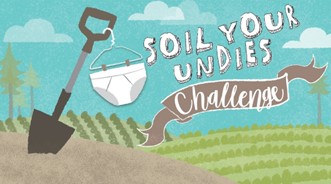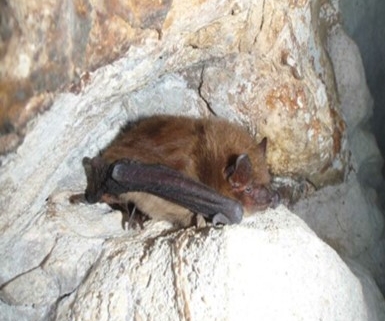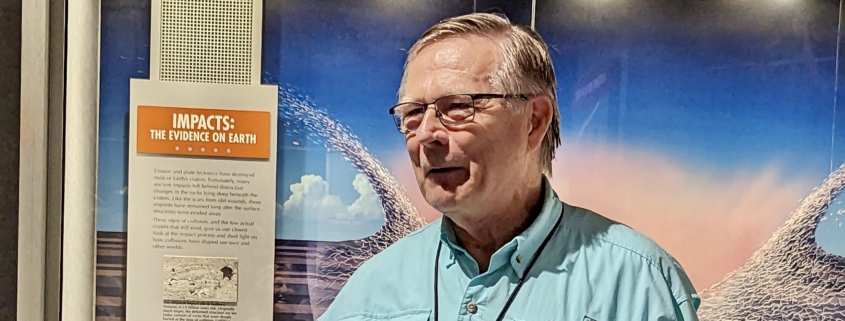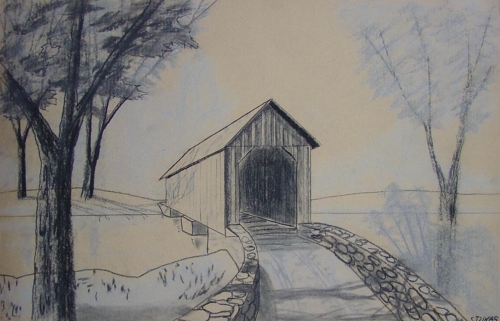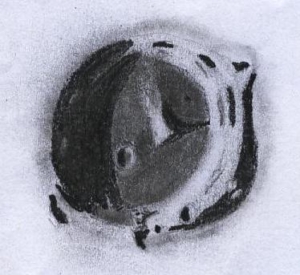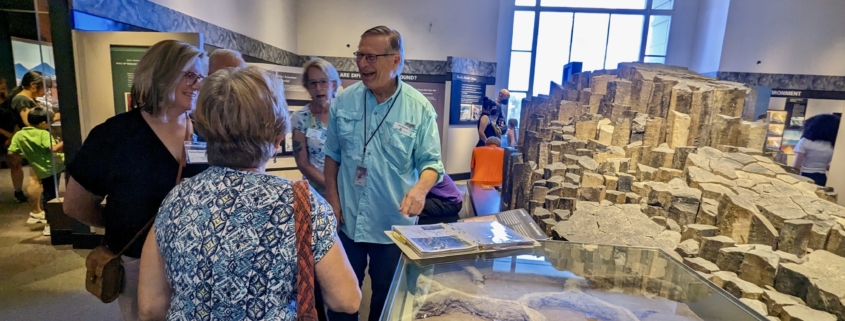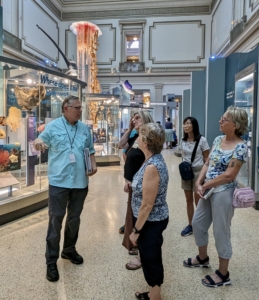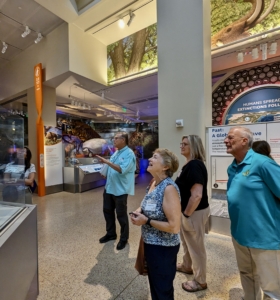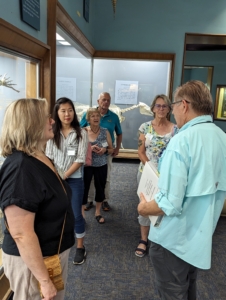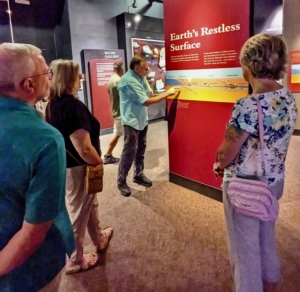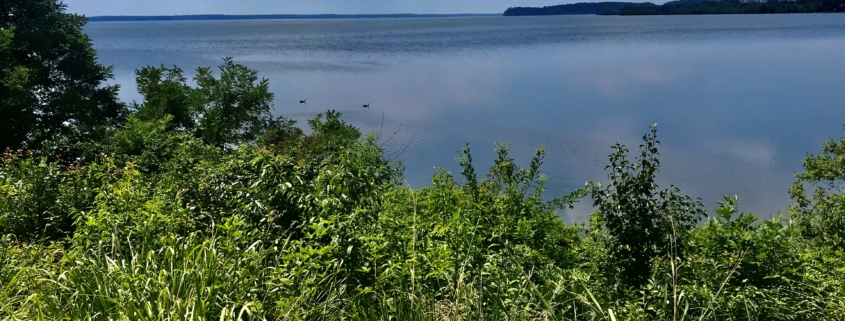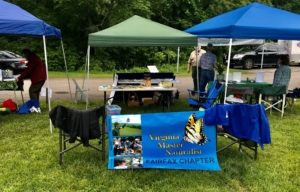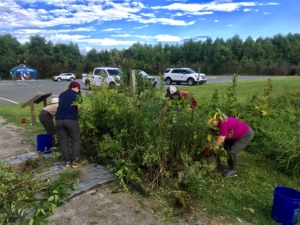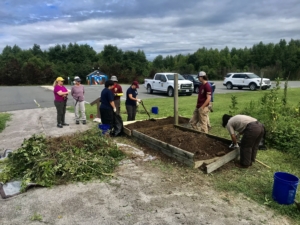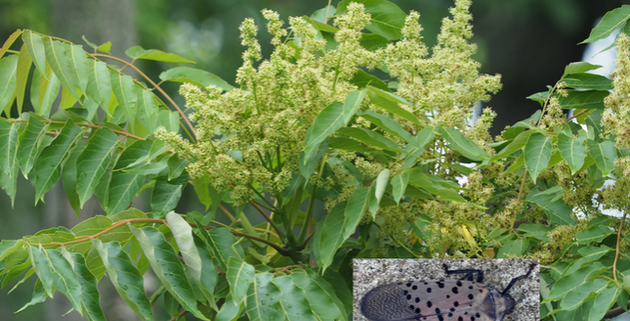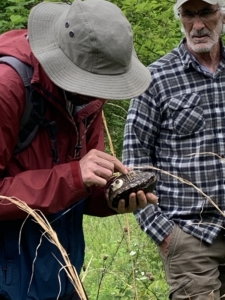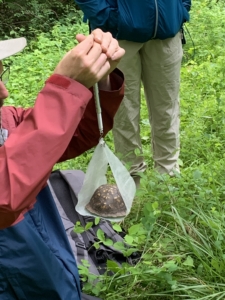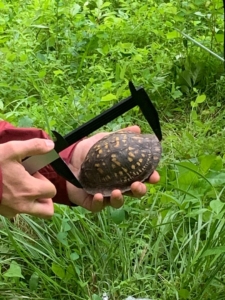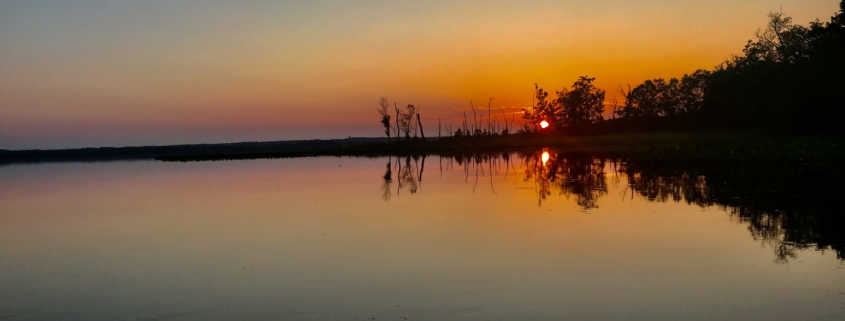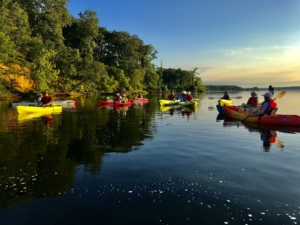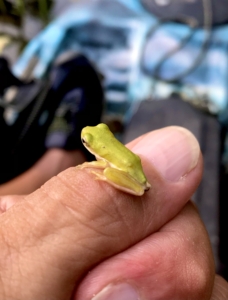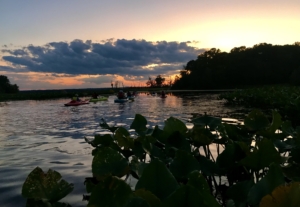Northern Virginia Soil and Water Conservation District: Soil Your Undies Campaign
Article and Images Courtesy of The Northern Virginia Soil and Water Conservation District
Soil Your Undies Campaign
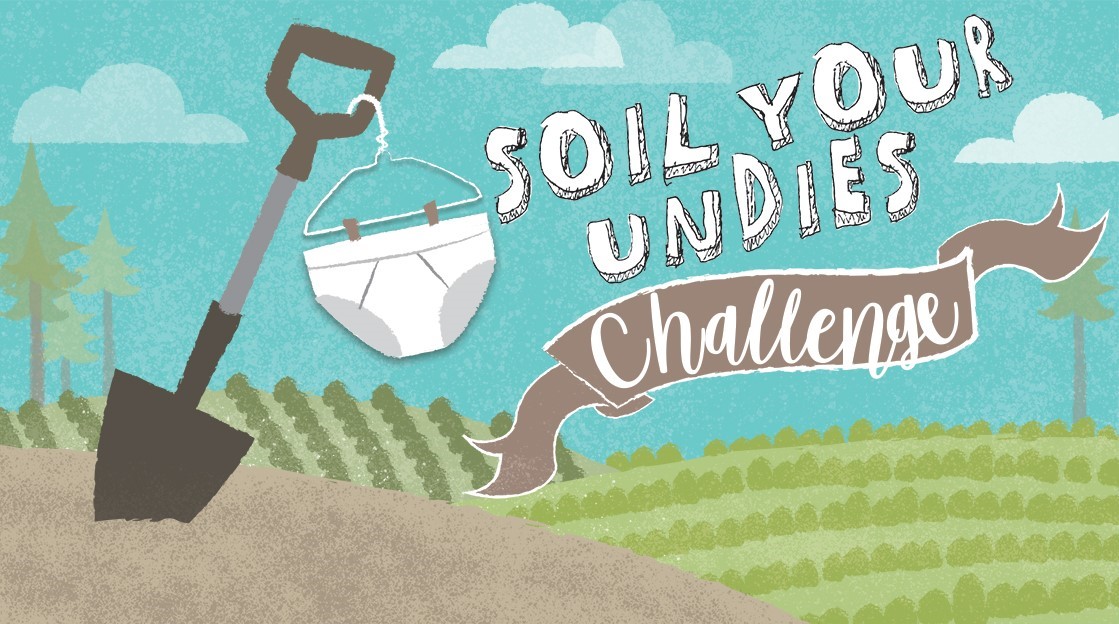
The Northern Virginia Soil and Water Conservation District is challenging residents all across Fairfax County to bury a pair of cotton underwear as part of a campaign to promote soil health awareness. How does it work? Just bury a pair of cotton underwear and dig it back up after at least 60 days. It’s the quick and dirty way to test the microbial activity in your soil. The more the underwear is deteriorated, the healthier your soil!
Although you can use the Soil Your Undies Challenge to check your soil health at any time, the most microbial activity occurs during the warm summer months, making this an easy and fun addition to your summer break plans!
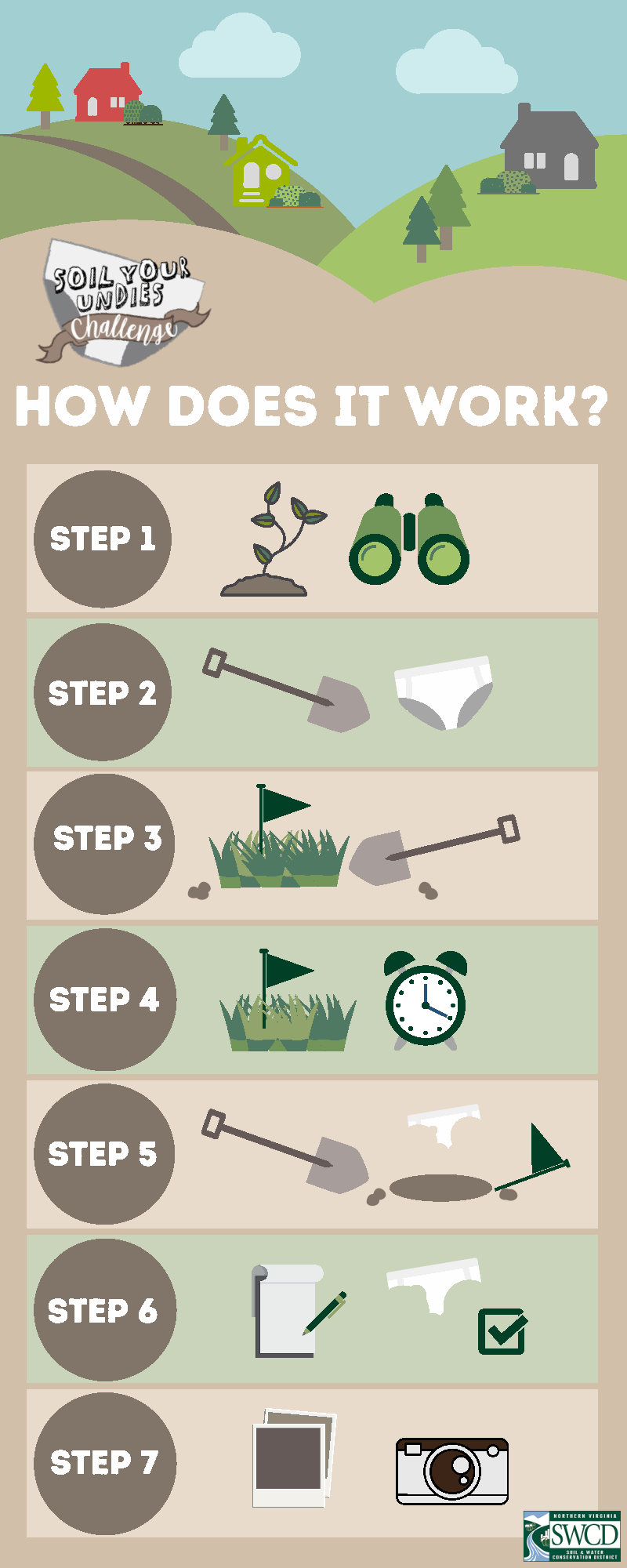
Join the Challenge!
Step 1: Look for a place where you want to study the health of the soil. Make sure you are only studying sites on your property or with the permission of the landowner.
Step 2: Bury a pair of white cotton undies (or any white cotton clothing item) 3 inches under the soil’s surface. Be sure to take a “before” photo.
Step 3: Don’t forget to mark your study site with a flag or other easily-identifiable marker!
Step 4: Wait at least 60 days (this is the hard part…)
Step 5: Locate your marked study site and dig up your cotton undies. Be sure to take an “after” photo.
Step 6: How healthy is your soil? Healthier soils have a lot of microbial activity, and the healthy fungi and bacteria in the soil will break down your cotton undies. The more degraded your undies are, the more microbial activity you have in your soil, and the healthier your soil is.
Step 7: Share the results of your citizen science project! Email your photos and any notes you may have to [email protected], and share your results with us on Facebook @nvswcd and on Instagram @NorthernVirginiaSWCD. We’ll be sharing our results with you, too!
About Soil Health
Healthy soil contains billions of microbes that consume organic material (in this case, cotton underwear). In fact, one teaspoon of healthy soil contains more microbes than there are people on the planet. In addition to chowing down on organic matter like cotton, they also help soil resist erosion, cycle nutrients, and store water.
As world population and food production demands rise, keeping our soil healthy and productive is of paramount importance. By farming using soil health principles and systems that include no-till, cover cropping, and diverse rotations, more and more farmers are increasing their soil’s organic matter and improving microbial activity. As a result, farmers are sequestering more carbon, increasing water infiltration, improving wildlife and pollinator habitat—all while harvesting better profits and often better yields. In backyards, healthy soil can promote the growth of a healthy lawn and landscaping, as well as help water infiltrate and prevent erosion.
You can improve soil health by following these four steps:
- Avoid soil disturbance wherever and whenever possible.
- Maximize soil cover with living plants and residue.
- Maximize biodiversity by growing a variety of plants and managed integration of livestock.
- Maximize living roots in the soil throughout the year.


